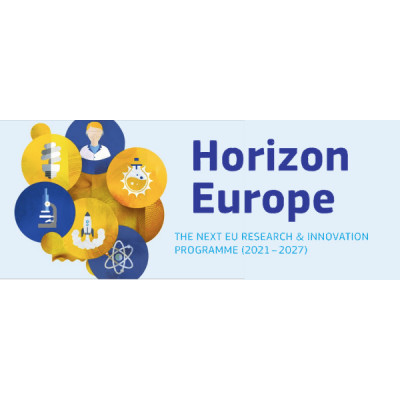Share
Print

Call updates
Nov 5, 2021 3:52:01 PM
Submissions to call HORIZON-CL4-2021-DIGITAL-EMERGING-01
A total of 327 proposals has been submitted to call HORIZON-CL4-2021-DIGITAL-EMERGING-01, which closed on 21 October 2021. These proposals, of which the evaluation will be organized over the coming weeks and months, were submitted to the following topics:
HORIZON-CL4-2021-DIGITAL-EMERGING-01-12 - European Network of Excellence Centres in Robotics (RIA)
2 proposals (indicative budget 11,5 EUR million)
Oct 4, 2021 2:14:03 PM
Please note that the 'Other annexes' box has been added in the submission system to allow the upload of an Annex with the description of the use of financial support to third parties. The description of the content of this annex is described in the Part B of the Application Form.
Jun 22, 2021 3:40:31 PM
The submission session is now available for: HORIZON-CL4-2021-DIGITAL-EMERGING-01-12(HORIZON-RIA)
European Network of Excellence Centres in Robotics (RIA)
TOPIC ID: HORIZON-CL4-2021-DIGITAL-EMERGING-01-12
Programme: Horizon Europe Framework Programme (HORIZON)
Call: Digital and emerging technologies for competitiveness and fit for the green deal (HORIZON-CL4-2021-DIGITAL-EMERGING-01)
Type of action: HORIZON-RIA HORIZON Research and Innovation Actions
Type of MGA: HORIZON Action Grant Budget-Based [HORIZON-AG]
Deadline model: single-stage
Opening date: 22 June 2021
Deadline date: 21 October 2021 17:00:00 Brussels time
Topic description
ExpectedOutcome:
Proposal results are expected to contribute to all the following expected outcomes:
Scope:
To ensure European open strategic autonomy in robotics, with huge potential socio-economic impact, it is essential to reinforce and build on Europe’s assets, including its world-class research community. In order to stay at the forefront of technological developments, it is essential that researchers collaborate, share ideas and research outcomes. A strongly networked community focused on excellence will be better at addressing the major robotics challenges that block the domain’s further development and deployment.
As stated in the communication from the European Commission on Artificial Intelligence for Europe[1] and the coordinated action plan between the European Commission and the Member States and Associated Countries[2], while Europe has undeniable strengths with its many leading research centres, efforts are scattered. Therefore, joining forces will be crucial to international competitiveness. Europe must scale up existing research capacities and reach a critical mass through tighter networks of European robotics excellence centres. Proposals should develop mechanisms to reinforce and network excellence centres in AI-powered robotics[3], bringing the best scientists from academia and industry to join forces in addressing the major robotics challenges hampering its deployment, and to reinforce excellence in robotics throughout Europe via a network of collaboration that focuses research excellence on future industrial needs.
Such networks are expected to mobilise leading researchers to collaborate on key robotics topics, to reach critical mass and increase the impact of the funding in progressing faster in joined efforts rather than working in isolation, with fragmented and duplicated efforts.
Composition of the Network:
Activities of the Network:
The proposals should:
Proposals should define a number of major scientific and application challenges it will focus on and which will mobilise the community to join forces across Europe in addressing them. Continuous evaluation and demonstration of progress towards solving the targeted challenges will motivate the entire network and support publications and scientific career developments (providing reference benchmarks to publish comparative results, using the reference data, scenarios, etc.), and also showcase the technology in application contexts, to attract more user industries and eventually foster take-up and adoption of the technology. Scientific and technological progress will be monitored through qualitative and quantitative KPIs (including industry and service relevant KPIs), demonstrators, benchmarking and progress monitoring processes.
Activities are expected to achieve TRL 4-5 by the end of the project.
To address limitations of the use of robots due to human factors, an interdisciplinary approach involving both technical and SSH[5] researchers is encouraged to address issues such as interaction design, human factors, acceptability, non-discrimination and biases and trustworthiness, taking into account gender and intersectionality[6] aspects, as appropriate. Indeed, human-centred approaches in combination with multi-stakeholder co-design activities can contribute to sustainable development of new enabling technologies. Putting people at the forefront is expected to generate novel transformation pathways, which can remedy existing technology in novel ways, and propose feedback loop systems that engage human users in developing new sociotechnical learning situations and tools. Further, agile sociotechnical learning designs can remedy e.g. less efficient technologies, by emphasizing human aspects of technologies in any sector (industry, healthcare, smart homes, etc.). Where appropriate, special attention will be given to including users of diverse age, gender and background.
The proposals are expected to include mechanisms to share resources, knowledge, tools, modules, software, results, expertise, and make equipment/infrastructure available to scientists to optimise the scientific and technological progress. To that end, tools such as the AI-on-demand platform[7] and Digital Industrial Platform for Robotics[8] should also be exploited, enhanced and further developed by the network, to support the networking, quality assessment, benchmarking and sharing of resources, maximising re-use and up-take of results. Openness and interoperability of components are encouraged to develop synergies and cross-fertilization between different approaches and solutions (e.g. through modularity of components or open interfaces).
The proposals are also expected to include collaboration mechanisms among the best robotics teams, but also mechanisms to bring all European robotics teams to the highest level of excellence.
Proposals are expected to develop synergies:
All proposals are expected to allocate tasks to cohesion activities with the PPP on AI, Data and Robotics and funded actions related to this partnership, including the CSA HORIZON-CL4-2021-HUMAN-01-02. Where relevant, synergies with other PPPs are encouraged.
Specific Topic Conditions:
Activities are expected to start at TRL 2-3 and achieve TRL 4-5 by the end of the project – see General Annex B.
Cross-cutting Priorities:
Socio-economic science and humanities
[1]https://ec.europa.eu/digital-single-market/en/news/communication-artificial-intelligence-europe
[2]https://ec.europa.eu/commission/presscorner/detail/en/IP_18_6689
[3]Covering robots with certain level of intelligence/autonomy in their behaviour
[4]Maximum amount per third party, received from a given Action, over its entire duration
[5]Social Sciences and Humanities
[6]https://en.wikipedia.org/wiki/Intersectionality - intersectional aspects could cover gender, age, social level, education, ethnic origin, etc.
[7]Initiated under the AI4EU project https://cordis.europa.eu/project/id/825619 and further developed in projects resulting from H2020-ICT-49-2020 call
[8]https://robmosys.eu/newsrobmosys-rosin-towards-an-eu-digital-industrial-platform-for-robotics/
